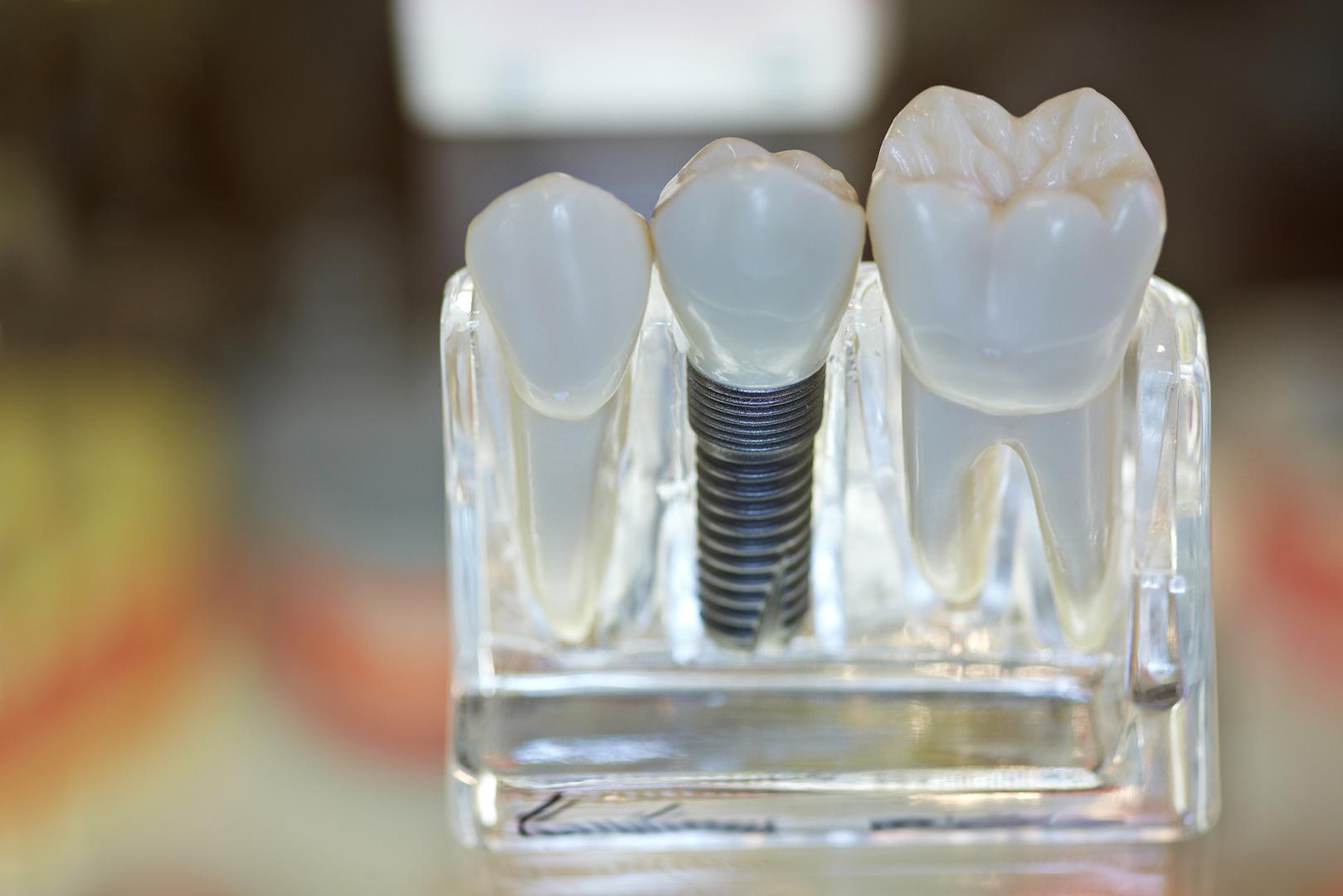Implantology
With extensive experience in implantology, we handle all your implant needs with the same consideration, be it simple or complex ones.

SCREW-RETAINED IMPLANT-SUPPORTED CROWN/BRIDGE
Advantages
- Suitable for limited spaces (medial-distal and occlusal)
- Avoid any risk of peri-implantitis due to excess cement
- Easy control of the crown abutment
- High adjustment precision
- In the case of anterior teeth, if the access well is located lingually, we will get an excellent aesthetic result
- Stop bone resorption
Disadvantages:
- Occlusal morphology for back teeth
- Risk of interference when adjusting the occlusion
- Risk of screw fracture
- Screwhead wear making unscrewing difficult
- The access hole for the fixing screw may be visible. However, it can be hidden using an aesthetic composite.
CEMENT-RETAINED IMPLANT-SUPPORTED CROWN/BRIDGE
Advantages of cement-retained implant-supported crowns
- Correction of divergent axes is possible
- More aesthetic occlusal anatomy, easier bite adjustment
- Same basic principle as for a conventional crown
Disadvantages of cement-retained implant-supported crowns
- Requires more occlusal space
- Risk of excess cement leading to peri-implantitis
CUSTOM ABUTMENT AND AXIS ADJUSTMENT
- Allows the positioning of the screw access shaft at 25 degrees to the implant axis for restoration of almost any screw-retained implant-supported crown
- Aesthetic area to avoid screw access to the mouth.
IMPLANT-SUPPORTED OVERDENTURES WITH BAR
Advantages:
- Reduce the size of a complete prosthesis
- Relieve the gums
- Avoid settling of the device over time
SURGICAL AND RADIOLOGICAL GUIDE
When to use a surgical guide?
- To reduce surgery time
- To enhance your treatment quality
- For patient comfort
Types of surgical guides
- Pilot surgical guide
- Guided surgical guide
- Complete guided surgical guide
Feel free to contact us for any further information.








